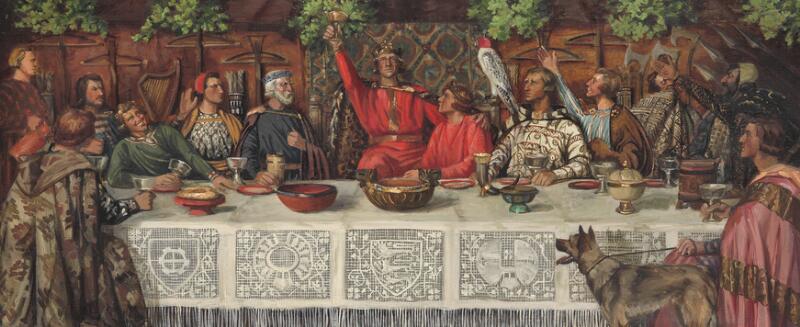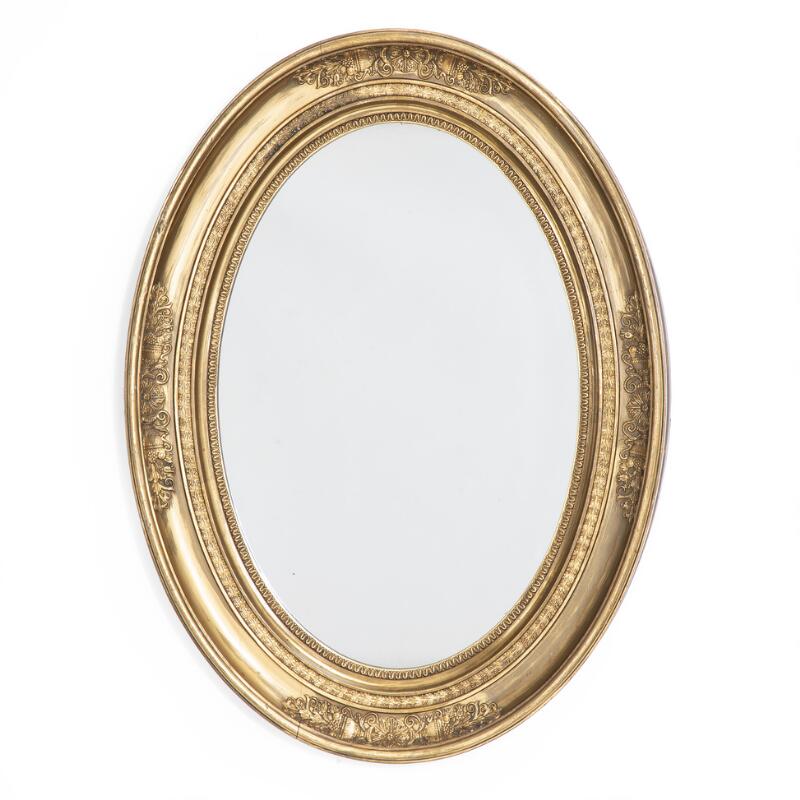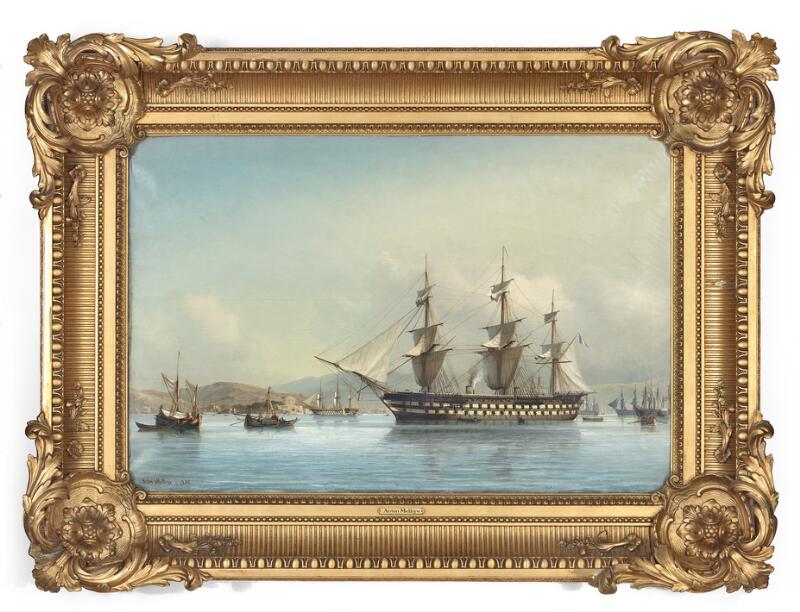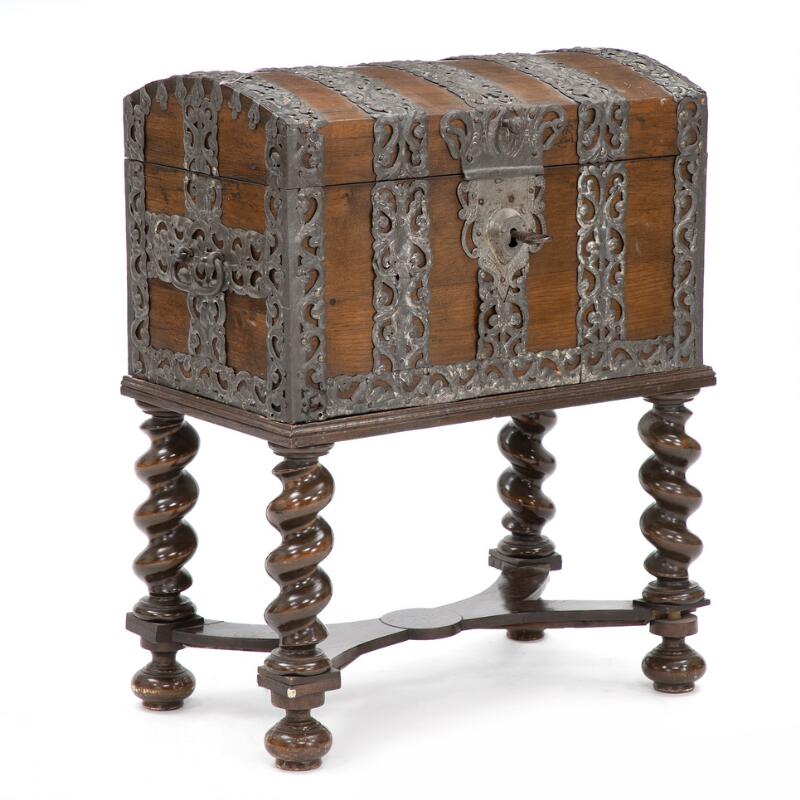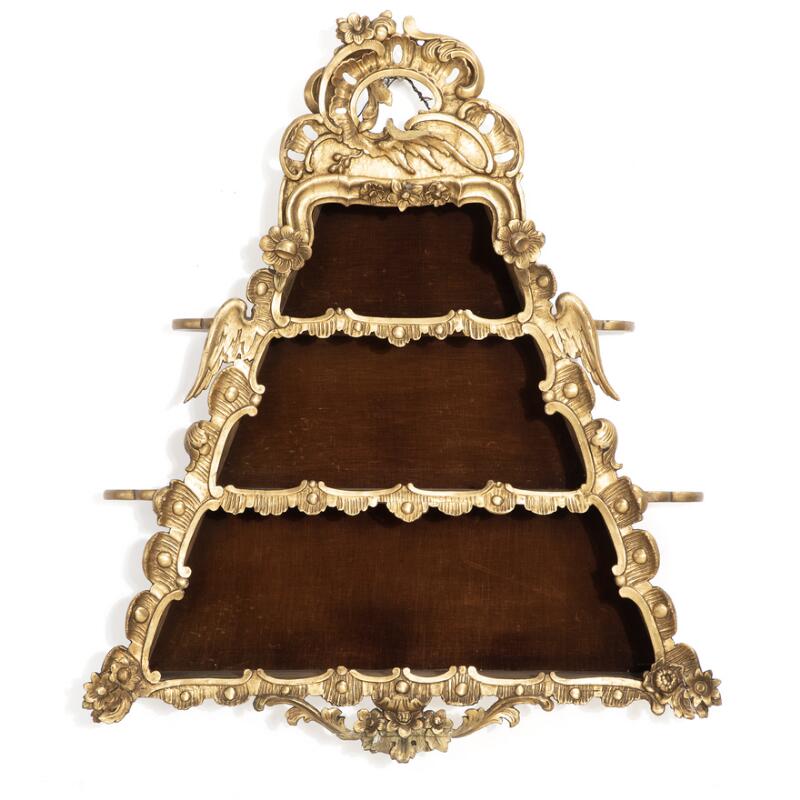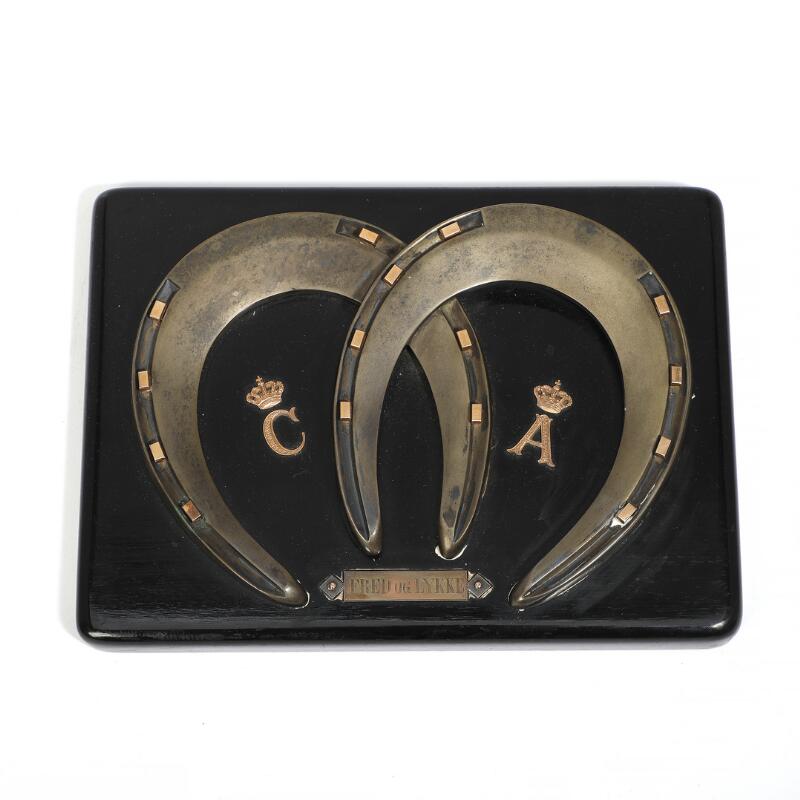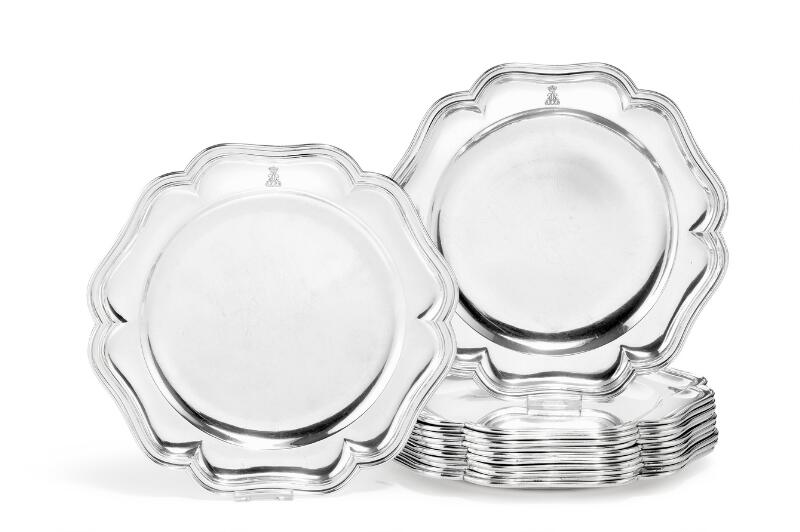Kongelige genstande fra Hans Excellence Ingolf Greve af Rosenborg
Den 6. marts kommer kunst og indbo fra Hans Excellence Ingolf Greve af Rosenborg på vores Traditionelle Auktion i Bredgade samt på en Netauktion senere samme dag.
Nu har du mulighed for at få et stykke af danmarkshistorien med hjem, når en række kunstgenstande, der har tilhørt den danske kongefamilie gennem helt op til fem generationer, kommer under hammeren. Hans Excellence Ingolf Greve af Rosenborg, der erhvervede Egeland Gods i 1967, har grundet sin flytning fra godset valgt at sætte en række kongelige kunstgenstande på auktion. Flere af disse har tidligere stået i Det Gule Palæ, Frederik VIII’s Palæ og Christian VIII’s Palæ på Amalienborg, Sorgenfri Slot og sommerresidensen Klitgaarden ved Skagen.
”Vi ser frem til at udbyde de i alt 39 emner på vores auktion. De fleste er gået i arv i den danske kongeslægt i langt mere end 100 år. Dermed fortæller de ikke kun dele af danmarkshistorien, men også de kongelige familiemedlemmers personlige historie.”
Martin Hans BorgChefekspert i kongelige samlerobjekter hos Bruun Rasmussen
I kongefamiliens eje
De fleste af auktionens udbudte genstand er nedarvet gennem hele fem generationer af kongefamilien. Det er fra Hans Excellence Ingolf Greve af Rosenborgs tipoldeforældre, Kong Christian IX og Dronning Louise af Danmark, oldeforældrene, Kong Frederik VIII og Dronning Lovisa af Danmark, og bedsteforældrene, Kong Christian X og Dronning Alexandrine af Danmark. Genstandene er herefter nedarvet til Grevens forældre, Arveprins Knud og Arveprinsesse Caroline-Mathilde af Danmark, og senest til Greven selv.
”De kunstgenstande, som Greven har valgt at sætte på auktion, er meget forskellige. Her er for eksempel kobbertøj fra køkkenet i Frederik VIII’s Palæ på Amalienborg, der fortæller om Frederik VIII som gourmand. Der er også lænestole fra Christian X’s dagligstue, der vidner om kongens smag i boligindretning. Og sølvbestik fra Dronning Alexandrines forældre, der blev dækket op med til taffel på Sorgenfri Slot og kunne berette om hendes barn- og ungdom,” fortæller Martin Hans Borg.
Spejl fra Kong Christian IX og Dronning Louise af DanmarkEn af auktionens genstande kan spores helt tilbage til Kong Christian IX (1818-1906) og Dronning Louise af Danmark (1817-1898). Fra Det Gule Palæ stammer nemlig et senempire-spejl fra 1840’erne, vurderet til 4.000-6.000 kr. ”Ægteparret bosatte sig som nygifte i Det Gule Palæ, og det er interessant at forestille sig, at netop de har set sig selv i dette spejl. Kong Christian IX var født Prins af Glücksborg og ikke udset til at skulle overtage Danmarks trone, men da Kong Frederik VII af Danmark ikke efterlod sig tronarvinger, blev Prins Christian valgt til som efterfølger,” fortæller Martin Hans Borg. |
|
|
|
I 1842 blev han gift med Prinsesse Louise af Hessen-Kassel, som var Kong Christian VIII af Danmarks søsters datter og dermed kusine til Kong Frederik VII af Danmark (1808-1863). Det var da også Prinsesse Louises arveret, der medførte, at ægteparret kunne blive konge og dronning af Danmark. ”Kongeparret opnåede en utrolig stor popularitet, blandt andet ved børnenes internationale ægteskaber, der gav kongeparret tilnavnet ’Europas Svigerforældre’. Deres enkle dagligliv med familiært sammenhold, øllebrød til morgenmad og kortspil om aftenen blev også et forbillede for de danske familier i 1800-tallet,” fortæller Martin Hans Borg. |
Kunst og møbler fra Frederik VIII og Dronning Lovisa af Danmark
|
Andre af auktionens højdepunkter kommer fra Kong Frederik VIII (1843-1912) og Dronning Lovisa (1851-1926) af Danmark. ”Frederik VIII var kronprins i hele 43 år, men kun regent i 6 år. Han er derfor blevet kaldt ’den glemte konge’, da hans far regerede i mere end fire årtier og sønnen, Kong Christian X af Danmark, i 35 år,” fortæller Martin Hans Borg. Fra Frederik VIII’s Palæ på Amalienborg udbydes bl.a. et oliemaleri af Anton Melbye, der forestiller det franske skruelinieskib Napoleon, vurderet til 100.000-150.000 kr. Fra samme palæ udbydes også en dokumentkiste af egetræ vurderet til 4.000-6.000 kr. samt en amagerhylde af forgyldt træ i rokokostil vurderet til 4.000-6.000 kr. |
|
|
|
|
|
|
”Frederik VIII var veluddannet og forberedte sig grundigt til sin kongegerning. Via sit ægteskab med den svenskfødte og velhavende kronprinsesse Lovisa levede han som kronprins en økonomisk ubekymret tilværelse, blandt andet i Frederik VIII’s Palæ på Amalienborg, som ægteparret nyindrettede efter de mest moderne og historicistiske stilarter,” fortæller Martin Hans Borg.
”Derudover var han en godmodig far, havde interesse for kunst, litteratur og videnskab og var meget godgørende og havde et stort samfundsengagement. Han tog ofte på rejser, gerne inkognito, og det var faktisk ham, der opfandt titlen ’Greve af Rosenborg’, som han brugte, når han ikke ville rejse officielt som kronprins,” fortæller Martin Hans Borg.
Kostbare malerier og billardbord fra Christian X og Dronning Alexandrine
Fra Christian VIII's Palæ på Amalienborg udbydes også en række kunstværker, bl.a. et maleri af Carl Locher fra Kongerejsen til Færøerne og Island vurderet til 80.000-100.000 kr. samt et maleri af Agnes Slott-Møller med titlen "Kong Valdemar Sejr ved Jagtmåltidet på Lyø" vurderet til 80.000-100.000 kr.
|
|
Derudover udbydes bl.a. en brevpresser med hestesko og monogrammer af sølv og guld, der var en bryllupsgave til Kong Christian X (1870-1947) og Dronning Alexandrine af Danmark (1879-1952). Den er graveret med parrets bryllupsdato 26. april 1898 og er vurderet til 3.000 kr.
Fra parret har man også mulighed for at erhverve sig en del af et bryllupsudstyr på 12 dækketallerkener af sølv og kronet monogram for Prins Christian (X) og Prinsesse Alexandrine. Sættet er vurderet til 30.000-40.000 kr.
|
|
|
|
”Kong Christian X af Danmark blev efter 1. verdenskrig det populære symbol på Danmarks genforening med Sønderjylland. Han blev om end endnu mere populær under den tyske besættelse, hvor han blev et nationalt symbol i den danske befolkning,” fortæller Martin Hans Borg, som fortsætter:
”Han var gift med Dronning Alexandrine, som var født prinsesse af Mecklenborg-Schwerin. Dronningen havde en god humor, en skarp intelligens og kunne flere sprog. Som konstitutionel dronning holdt hun sig neutral i forhold til loven om kvindernes valgret, der blev underskrevet af hendes mand i 1915, men hun har utvivlsomt været enig. Dronning Alexandrine var både musikalsk ved flygelet og kunstnerisk med håndarbejde, men kunne også gå lidt mod strømmen i en domineret mandeverden. Hun var for eksempel en ivrig fotograf, spillede golf, dyrkede sejlsport og roning. Ikke mindst holdt hun meget af spille billard,” fortæller Martin Hans Borg.
|
På auktionen finder man da også et billardbord, der har tilhørt Dronning Alexandrine. Til billardbordet medfølger en kø med monogram, der var en fødselsdagsgave til hendes 60-års fødselsdag. Vurderingen lyder på 8.000-10.000 kr. Mange af kunstgenstandene stod senere i Christian VIII’s Palæ på Amalienborg, som Arveprins Knud c og Arveprinsesse Caroline-Mathilde af Danmark (1912-1995) havde rådighed over i årene 1952-1976, samt hos Arveprinsparret på Sorgenfri Slot. |
|
|
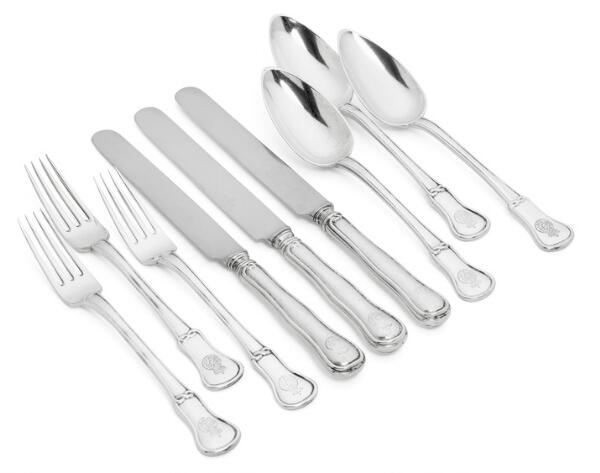
For yderligere information, kontakt os venligst:
|
|
Martin Hans BorgMartin Hans Borg
Ældre sølv og kongelige samlerobjekter
Chefekspert / Kongelige samlerobjekter / København
|
